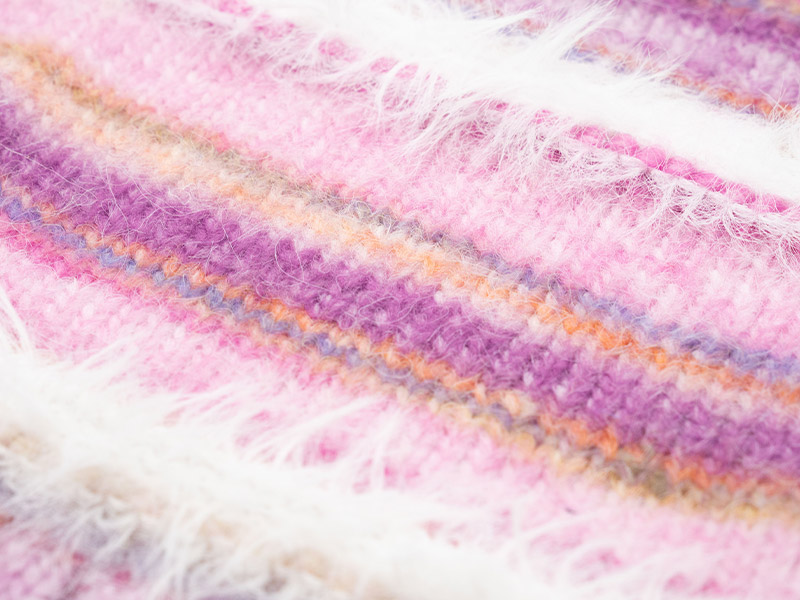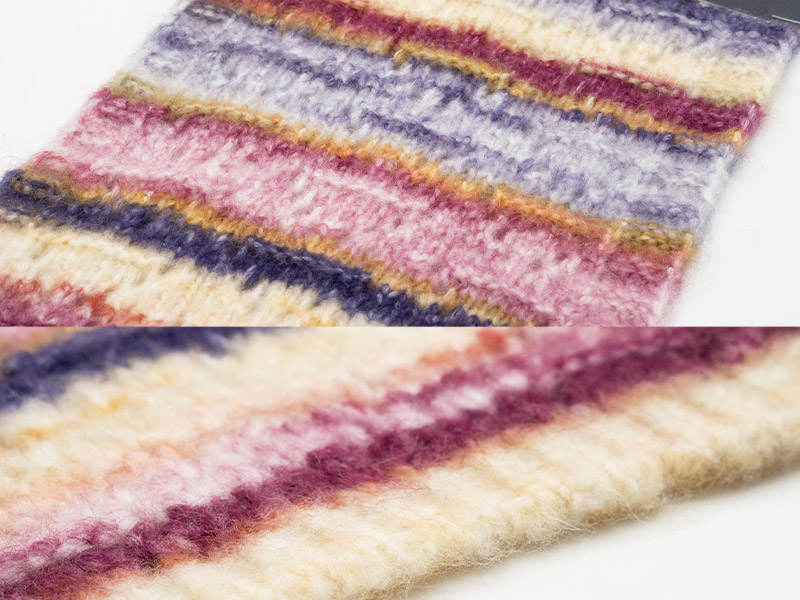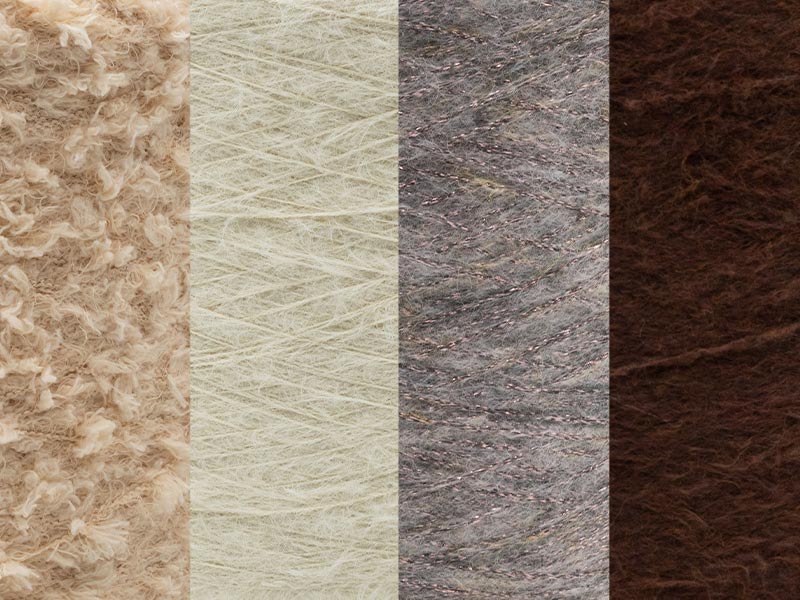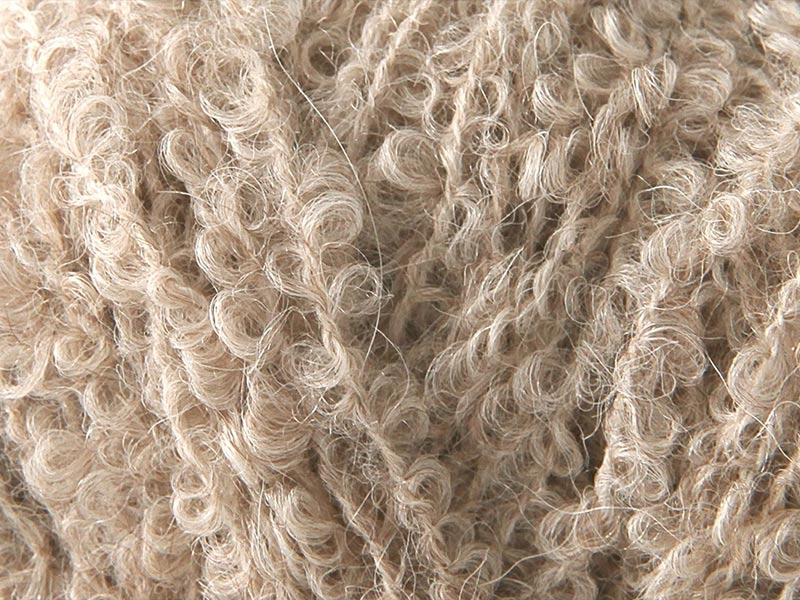What is Mink Yarn?
Mink yarn, also known as faux mink yarn or imitation mink yarn, is a type of fancy yarn that mimics the luxurious texture and visual appeal of natural mink fur—without using any animal materials. It’s soft, fluffy, smooth, and often has a beautiful sheen, making it ideal for creating high-end fashion items and cozy textiles. But what exactly is mink yarn, and why is it gaining popularity in the textile and knitting industries? Let’s explore everything you need to know about this fascinating fancy yarn.
Understanding Mink Yarn: A Fancy Yarn Innovation
Mink yarn is a type of fancy yarn, characterized by its ultra-soft, fur-like texture and excellent warmth retention. Typically made of synthetic fibers such as nylon and acrylic, it is designed to replicate the look and feel of mink fur while offering better durability, washability, and affordability.
Unlike basic spun or filament yarns, fancy yarns like mink yarn have distinctive surface textures or visual effects. These unique aesthetics are often achieved through special spinning techniques or fiber combinations. If you’re not familiar with the world of fancy yarns, you can read more about our range of fancy yarns for different applications.

Key Characteristics of Mink Yarn
a) Soft and Plush Texture
The main selling point of mink yarn is its extremely soft and luxurious hand-feel, closely resembling the silky smoothness of real mink fur. This makes it ideal for garments that require a high level of comfort, such as scarves, cardigans, and blankets.
b) High Density & Warmth
Mink yarn typically has a high fiber density, which gives it strong insulation properties. When knit or woven into a fabric, it traps heat well, making it a preferred material for fall and winter apparel.
c) Vibrant Color Options
Thanks to the synthetic nature of the base fibers, mink yarn can be dyed in vibrant and long-lasting colors. From classic neutrals to bold fashion tones, the palette is vast and versatile.
d) Fur-like Appearance
The yarn is engineered to produce a fur-like surface when knitted. It often has a slight sheen and a brushed finish, mimicking the glimmer and movement of real fur.
How is Mink Yarn Produced?
The manufacturing of mink yarn involves several precise steps:
- Fiber Selection: Nylon and acrylic are the most commonly used fibers due to their durability and softness.
- Blending and Spinning: Fibers are blended and spun using advanced fancy yarn spinning techniques to achieve a consistent fluffiness
- Brushing/Finishing: The yarn is brushed or processed to raise the nap and achieve the signature fuzzy effect.
- Heat Setting: A final heat treatment helps to stabilize the yarn structure and lock in the texture.
- This complex process results in a yarn that combines aesthetic appeal with performance functionality.
Applications of Mink Yarn in Fashion and Textiles
Mink yarn is widely appreciated for its versatility and elegance. Here are some common end uses:
• Knitwear
Cardigans, sweaters, and turtlenecks made from mink yarn are extremely popular due to their softness and warmth.
• Scarves & Shawls
Because of its plush texture, mink yarn is often used to make luxurious scarves and wraps that feel soft against the skin.
• Hats & Gloves
Fashion accessories like beanies and mittens are another great use, especially when aiming for a winter-friendly, premium look.
• Home Textiles
Mink yarn is increasingly used in creating cozy home items like throws, cushion covers, and rugs.
For more product inspirations, check out our fancy yarn gallery.
Why Choose Mink Yarn Over Other Fancy Yarns?
There are many types of fancy yarns—feather yarn, chenille yarn, bouclé, and tape yarn, to name a few. However, mink yarn holds a special place due to the following benefits:
Features | Mink Yarn | Feather Yarn | Chenille Yarn |
Texture | Plush, fur-like | Flowy, feathery | Velvety, fuzzy |
Warmth | Excellent | Medium | Good |
Color Brilliance | High | Medium | Medium |
Durability | High | Medium | Medium |
Washability | Good | Low | Moderate |
If you are comparing mink yarn with other options, we recommend browsing our website www.duoyouyarn.com to find what best fits your needs.
Working with Mink Yarn: Tips for Designers and Crafters
Whether you’re a knitwear designer, DIY hobbyist, or textile brand, mink yarn offers many creative possibilities. But it also comes with a few challenges:
• Needle Selection
Use larger needles or hooks (around 6–8 mm) to accommodate the fluffy texture and avoid a dense, heavy fabric.
• Tension Control
Keep your tension loose and even to allow the yarn to bloom naturally.
• Minimal Stitch Patterns
Fancy stitch patterns often get lost in the fuzz. Stick to basic stitches to let the texture shine.
• Trimming and Blocking
After knitting, you may need to trim loose fibers or lightly block the finished piece to shape it.
If you’re planning to create your own mink yarn fashion series, feel free to contact our yarn experts for technical support.
Popular Mink Yarn Varieties
Mink yarn can come in several subcategories:
• Short-pile Mink Yarn
Ideal for garments and accessories where a neat and controlled surface is desired.
• Long-hair Mink Yarn
Provides a more dramatic, fluffy look, commonly used in statement pieces or trims.
• Blended Mink Yarn
Some variations include a blend with spandex for stretch, or with wool for extra warmth.
Our best-selling product line includes these types. Visit our product showcase page to explore all available variants.
Where to Source Quality Mink Yarn?
At Duoyou , we specialize in fancy yarns for premium textile applications, and mink yarn is one of our signature offerings. We offer a variety of textures, colors, and blends to suit your design needs. Whether you’re a fashion house or an independent label, we provide:
- Custom color development
- OEM/ODM services
- Low MOQ for sample orders
- Reliable global shipping
To get a sample or inquire about pricing, please visit our contact page.
Conclusion
Mink yarn is more than just a trend—it’s a luxurious and high-performance material that offers both beauty and function. From winter wear to interior design, its softness, warmth, and style make it a standout in the world of fancy yarns. If you’re looking for a yarn that combines elegance and innovation, mink yarn is a top contender.
Frequently Asked Questions
Q1: Is mink yarn suitable for baby garments?
Yes, it’s incredibly soft and non-irritating—however, we recommend double-checking the yarn label to ensure it’s safe for sensitive skin.
Q2: Can I machine wash items made with mink yarn?
Most types are machine-washable on a gentle cycle, but always refer to the manufacturer’s care instructions.
Q3: Does it shed?
Minimal shedding may occur during knitting or the first wash, but high-quality mink yarn is engineered to minimize this issue.
Related News
Discover more about the latest developments in the yarn industry, explore articles on development trends and innovative technologies, and provide you with more industry insights.

Wool Acrylic Blend Yarn: Benefits, Uses & Wholesale Sourcing Guide
The choice of fiber in the textile industry affects not only the quality of the finished product, but also how well it works, how much it costs, and how much people want to buy it. Wool and acrylic are two of the most popular fibers, and each has its own benefits. Wool is known for being warm, strong, and breathable, while acrylic is known for being strong, cheap, and easy to care for.

What Is Faux Mink Material? Ultimate Guide to Luxurious, Ethical Faux Fur
Faux mink material is a premium type of synthetic fur designed to imitate the lush, silky softness of real mink fur—without using any animal fibers. As an ethical and cost-effective alternative, faux mink offers elegance, warmth, and versatility for fashion, home décor, and craft applications. Its popularity has surged in recent years as both brands and consumers look for more sustainable, cruelty-free textile options.
But what exactly is faux mink? How is it different from other faux furs, and what makes it ideal for specific projects? Let’s explore everything you need to know.

The Secret Behind “Fuzzy Yarns”: How Different Fancy Yarns Make Soft, Fluffy Textures
In the fall and winter, nothing feels warmer or more welcoming than yarns with a soft, fuzzy touch. These “hairy” fancy yarns not only add warmth to any fabric, but they also give it a sense of texture, depth, and life. But how do these fluffy effects happen?
Let’s take a closer look at five common types of fuzzy fancy yarns: crochet yarn, blowing yarn, raised yarn, sueded yarn, and bouclé yarn. We’ll talk about how each one gets its unique surface effect, how comfortable it is, how much it costs, and what it’s good for.This guide will show you the best types of yarn to use for summer projects, compare their features, and give you some fun ideas for your next collection or DIY project.

